Your cart is currently empty!
Search results for: “74”
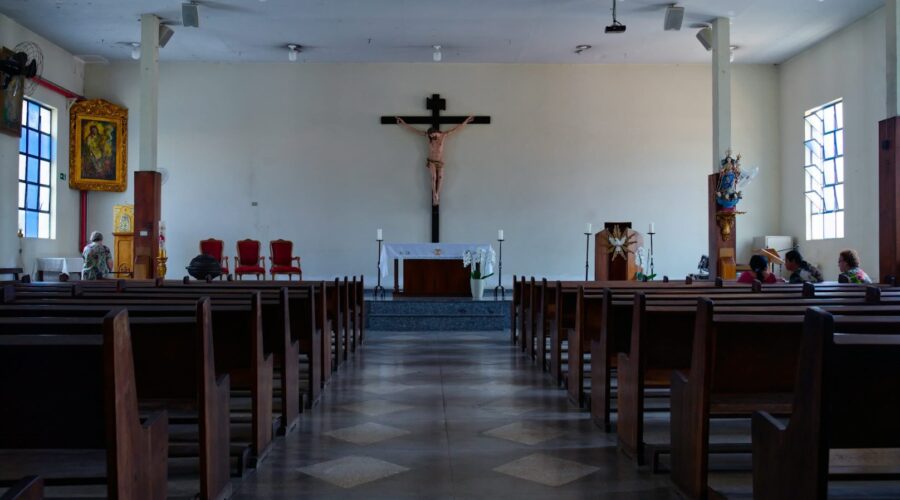
Louis Church: A Detailed Guide to Its History, Architecture, and Significance
Introduction
Louis Church, also known as Saint Louis Church, is a Roman Catholic parish church located in the historic center of Seville, Spain. It is one of the city’s most iconic landmarks and an important example of Gothic architecture. This blog post will provide a comprehensive guide to Louis Church, exploring its history, architecture, and significance.
History of Louis Church
Construction
The construction of Louis Church began in 1248 under the reign of King Alfonso X of Castile. It was built on the site of a former mosque, and its design was heavily influenced by the Gothic architecture of northern Europe. The church was completed in 1350, although some additions and modifications were made in subsequent centuries.
Religious Significance
Louis Church has played a significant role in the religious life of Seville. It is dedicated to Saint Louis of Toulouse, who was born in the city in 1274. The church became a popular pilgrimage site, and its reputation grew throughout the Middle Ages. Today, it remains an important center of worship for the Catholic community in Seville.
Architecture of Louis Church
Exterior
Louis Church is a large and impressive building with a distinctive Gothic exterior. The facade is dominated by a large rose window, which is flanked by two towers. The towers are decorated with intricate carvings and statues, and they provide a dramatic entrance to the church.
Interior
The interior of Louis Church is equally impressive. The nave is wide and spacious, and it is lined with tall, pointed arches. The ceiling is decorated with elaborate vaulting, and the walls are adorned with beautiful stained glass windows. The church also contains several important works of art, including a statue of Saint Louis of Toulouse and a painting of the Virgin Mary by Murillo.
Significance of Louis Church
Cultural Heritage
Louis Church is a valuable part of Seville’s cultural heritage. It is one of the city’s most important architectural landmarks, and it has played a significant role in the religious life of the community. The church is also a popular tourist destination, and it attracts visitors from all over the world.
Religious Center
As mentioned earlier, Louis Church remains an important religious center for the Catholic community in Seville. It is a place of worship, pilgrimage, and community gathering. The church also hosts a variety of religious events throughout the year, including masses, concerts, and exhibitions.
Louis Church for Tourists
Visiting Hours
Louis Church is open to the public every day of the week. The visiting hours are as follows:
- Monday to Saturday: 11:00 AM – 6:00 PM
- Sunday: 12:00 PM – 6:00 PM
Admission
Admission to Louis Church is free of charge. However, there is a suggested donation of 3 euros for visitors who wish to help with the maintenance and upkeep of the church.
Guided Tours
Guided tours of Louis Church are available in English, Spanish, and French. The tours last for approximately 45 minutes, and they provide a detailed overview of the church’s history, architecture, and significance. Guided tours can be booked in advance by contacting the church office.
Conclusion
Louis Church is a magnificent example of Gothic architecture and a significant landmark in Seville. Its rich history, impressive architecture, and religious significance make it a must-visit destination for anyone interested in the city’s cultural heritage. Whether you are a religious pilgrim, an art enthusiast, or simply a tourist, Louis Church is sure to leave a lasting impression.
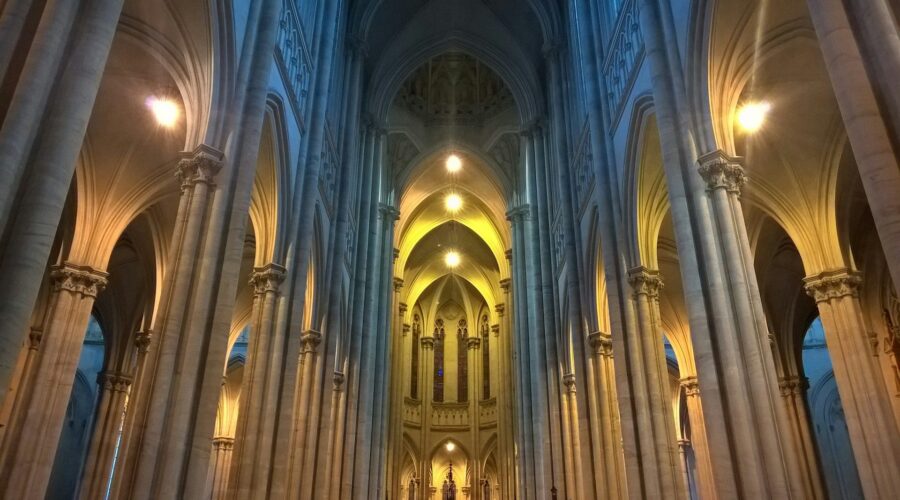
Discover the Majestic Holy Name of Jesus Cathedral: A Beacon of Faith and Architectural Splendor
Introduction
The Holy Name of Jesus Cathedral, a towering testament to faith and architectural brilliance, is a captivating landmark in the heart of Chicago. This hallowed sanctuary is renowned for its stunning Gothic Revival design, inspiring artwork, and rich history that unfolds a mesmerizing tale of devotion, resilience, and artistic triumph.
A Tapestry of History
The story of the Holy Name of Jesus Cathedral begins in the mid-19th century, when a small group of German immigrants established a parish in Chicago. As their congregation grew, they embarked on a grand endeavor to build a magnificent edifice that would reflect their unwavering faith and serve as a spiritual beacon for the city.
In 1874, the cornerstone of the cathedral was laid, and over the next three decades, skilled artisans meticulously constructed the colossal structure. The cathedral opened its doors in 1910, marking a momentous milestone in Chicago’s architectural and religious landscape.
Architectural Masterpiece
The Holy Name of Jesus Cathedral is a stunning example of Gothic Revival architecture, characterized by its soaring spires, intricate stonework, and elegant stained-glass windows. The cathedral’s facade is adorned with intricate carvings, depicting scenes from the life of Christ and the saints.
Inside, the cathedral’s grand nave is supported by massive pillars, creating a sense of awe and reverence. The vaulted ceilings are adorned with vibrant frescoes, immersing visitors in a celestial realm of divine beauty.
Awe-Inspiring Stained Glass
One of the most striking features of the Holy Name of Jesus Cathedral is its collection of magnificent stained-glass windows. Created by renowned artisans, these windows depict biblical scenes and figures, casting a kaleidoscopic play of colors across the cathedral’s interior.
Of particular note is the “Creation” window, a breathtaking masterpiece that spans three stories and depicts the biblical account of creation. The window’s vibrant hues and intricate details bring the story to life, creating a truly awe-inspiring spectacle.
Majestic Organ and Inspiring Artwork
The cathedral boasts a magnificent organ, one of the largest in the Midwest. The organ’s powerful sound reverberates through the cathedral, creating a glorious symphony that accompanies the solemn liturgies and joyous celebrations held within.
In addition to its stunning architecture and stained glass, the cathedral is also home to a collection of inspiring artwork. Paintings, sculptures, and mosaics grace the walls and alcoves, offering a testament to the artistry and devotion of the cathedral’s patrons.
A Sanctuary for Worship and Community
The Holy Name of Jesus Cathedral is not merely an architectural marvel but a thriving center of worship and community. Daily Masses, special liturgies, and religious services provide opportunities for spiritual nourishment and growth.
The cathedral also plays an active role in the wider community, offering charitable programs, hosting educational events, and providing support to those in need. It is a place where faith, hope, and love converge, creating a beacon of light in the bustling metropolis of Chicago.
Visitor Information
The Holy Name of Jesus Cathedral is open to visitors daily for self-guided tours. Guided tours are also available by appointment.
Address: 735 N State St, Chicago, IL 60610
Website: https://holynameofjesuscathedral.org/
Phone: (312) 337-5820
Email: [email protected]Conclusion
The Holy Name of Jesus Cathedral is a magnificent testament to the power of faith, the beauty of art, and the resilience of the human spirit. Its towering spires, awe-inspiring stained glass, and inspiring artwork create a sanctuary that transcends mere architecture, becoming a sacred space where the divine and the human connect in profound ways. As a beacon of hope and a symbol of the enduring power of spirituality, the Holy Name of Jesus Cathedral continues to captivate and inspire countless souls in Chicago and beyond.
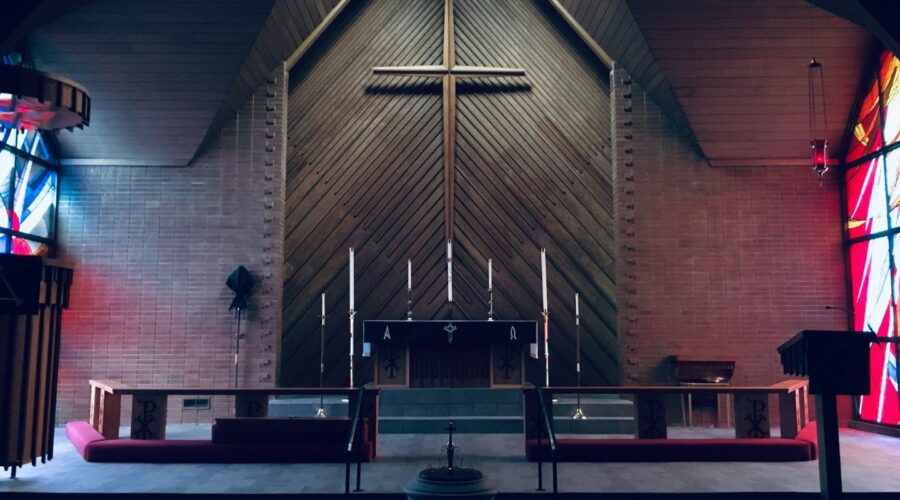
Chad Veach: Empowering a Generation Through Faith and Inspiration
Introduction
Chad Veach is an influential pastor, author, and speaker who has played a significant role in empowering a generation through faith and inspiration. Known for his passion for connecting people to God and helping them discover their purpose, Veach has built a robust global ministry that continues to impact lives worldwide.
Early Life and Background
Vocation and Preparation
Born in 1974 in Newport Beach, California, Veach felt a call to ministry from a young age. He attended Saddleback Church, where he was mentored by pastor Rick Warren and developed a deep foundation in biblical principles.
Founding Zoe Church
Planting Seeds of Faith
In 2000, Veach founded Zoe Church in Los Angeles, California, with a vision to create a church that was relevant, accessible, and transformative. Zoe Church rapidly grew, becoming one of the largest and most influential churches in the United States.
Speaking and Writing Ministry
Inspiring Hearts and Minds
Beyond his role as pastor, Veach is also a sought-after speaker and author. His messages are characterized by their authenticity, transparency, and practical wisdom. He has authored several books, including “Hope Rising” and “Unfiltered: Real Talk About Real Faith,” which have resonated with millions of readers globally.
Empowering Through Technology
Recognizing the power of technology, Veach leveraged digital platforms to extend his reach and impact. His podcast, “The Chad Veach Podcast,” features inspiring conversations with thought leaders and influencers, while his YouTube channel has garnered millions of subscribers and views.
Key Beliefs and Teachings
Grace and Empowerment
Central to Veach’s teachings is a message of grace and empowerment. He believes that God’s grace is sufficient for all our shortcomings, and that we are called to live empowered lives in Christ.
Purpose and Destiny
Veach emphasizes the importance of discovering our unique purpose and destiny. He encourages believers to seek God’s guidance and discern their path in life, knowing that they are created with a specific calling.
Community and Connection
Veach places a high value on community and connection. He believes that true growth and discipleship happen in the context of healthy relationships and authentic community.
Social Justice and Outreach
Compassion in Action
Beyond his spiritual leadership, Veach is actively involved in social justice initiatives and outreach programs. He has partnered with organizations addressing poverty, homelessness, and human trafficking, demonstrating the practical application of his faith.
Legacy and Impact
Chad Veach has made an undeniable impact on the Christian community and beyond. His ministry has reached millions of people, inspiring them to live lives of purpose, faith, and impact. His teachings continue to resonate with audiences worldwide, empowering them to find meaning and fulfillment in their walk with God.
Additional Resources
Conclusion
Chad Veach’s journey is a testament to the transformative power of faith and the importance of empowering others. Through his preaching, writing, and outreach efforts, he continues to inspire generations to embrace their purpose and live lives of meaning and significance.
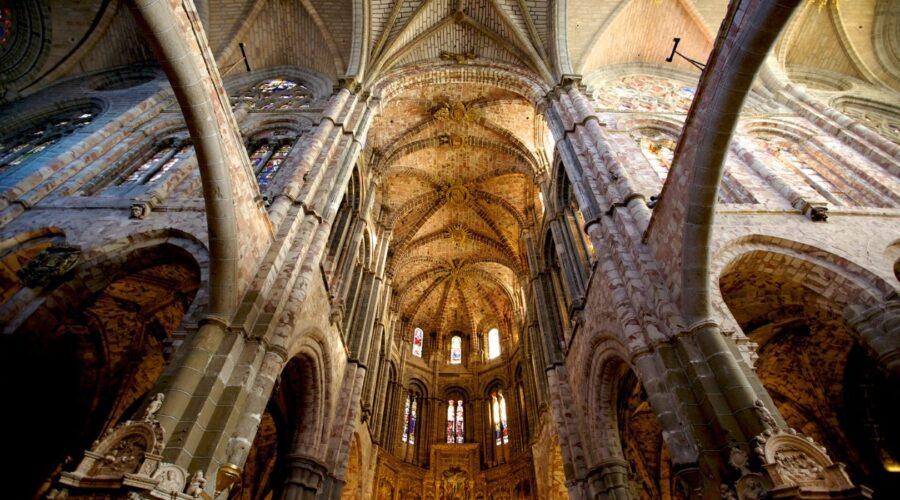
Discover the Enchanting Annunciation Greek Orthodox Church: A Spiritual and Historical Haven

Nestled in the heart of Milwaukee, Wisconsin, the Annunciation Greek Orthodox Church stands as a testament to faith, history, and architectural brilliance. This magnificent edifice has been a beacon of spirituality and a cornerstone of the Greek community for over a century, captivating visitors with its stunning beauty and profound historical significance.
History: A Journey Through Time
The Annunciation Greek Orthodox Church traces its roots back to the late 19th century, when a small group of Greek immigrants gathered to form a congregation in Milwaukee. In 1904, they acquired a modest building that served as their first church home. As the community grew, a grander and more permanent structure was needed.
In 1918, the congregation commissioned the renowned architect Frank Lloyd Wright to design a new church that would reflect the Byzantine heritage and architectural traditions of Greece. Wright’s design, which combined classical elements with modern innovations, was a bold and visionary departure from the typical church architecture of the time.
The cornerstone of the new church was laid in 1923, and the building was completed in 1926. The Annunciation Greek Orthodox Church has since become a designated Milwaukee Landmark, recognized for its architectural significance and its role in shaping the city’s cultural landscape.
Architecture: A Symphony of Styles
The Annunciation Greek Orthodox Church is a masterpiece of architectural fusion, seamlessly blending elements from different eras and cultures. Wright’s design is a testament to his architectural genius, creating a structure that is both aesthetically pleasing and spiritually uplifting.
Byzantine Influences:
- Geometric patterns and mosaic decorations
- Domed roof and arched windows
- Iconography and religious symbols
Modernist Innovations:
- Clean lines and geometric shapes
- Concrete construction and cantilevered balconies
- Extensive use of glass and natural light
Interior: A Sanctuary of Beauty
Stepping inside the Annunciation Greek Orthodox Church is a truly awe-inspiring experience. The interior is a symphony of colors, textures, and intricate details that create a sacred and immersive atmosphere.
Iconography:
- Depictions of Christ, the Virgin Mary, and saints
- Traditional Byzantine iconography with gold leaf and rich colors
- Icons adorn the walls, ceilings, and iconostasis
Mosaics:
- Vibrant and colorful mosaics depicting biblical scenes
- Geometric and floral patterns add to the visual richness
- Mosaics found in the sanctuary, narthex, and other areas
Frescoes:
- Large-scale paintings portraying religious narratives
- Traditional fresco technique with pigments and wet plaster
- Frescoes adorn the interior walls and ceilings
Community: A Spiritual Hub
Beyond its architectural splendor, the Annunciation Greek Orthodox Church is a vibrant and active community center. It offers a wide range of programs and services that cater to the spiritual, social, and educational needs of its members and the broader community.
- Worship: Daily services, Sunday Liturgy, and special religious observances
- Education: Sunday School, Greek language classes, and adult education programs
- Social events: Festivals, cultural gatherings, and community outreach initiatives
- Philoptochos Society: A philanthropic organization that supports local charities and community members in need
Visiting the Annunciation Greek Orthodox Church
If you are planning to visit the Annunciation Greek Orthodox Church, here are a few tips to ensure a meaningful and memorable experience:
- Respectful dress: Modest attire that covers shoulders and knees is recommended.
- Photography restrictions: Photography is not permitted during worship services or inside the sanctuary.
- Guided tours: Guided tours are available upon request and provide a deeper understanding of the church’s history and architecture.
- Mass: Sunday Liturgy is held at 10:00 AM and is open to all.
Conclusion
The Annunciation Greek Orthodox Church is a remarkable testament to the power of faith, the beauty of architecture, and the strength of community. Standing proudly in the heart of Milwaukee for over a century, it continues to inspire and uplift visitors with its timeless beauty and enduring spiritual presence. Whether you are a seeker of spirituality, an admirer of architecture, or simply curious to explore the rich cultural heritage of Milwaukee, the Annunciation Greek Orthodox Church is a destination that promises to leave a lasting impression.
Additional Information
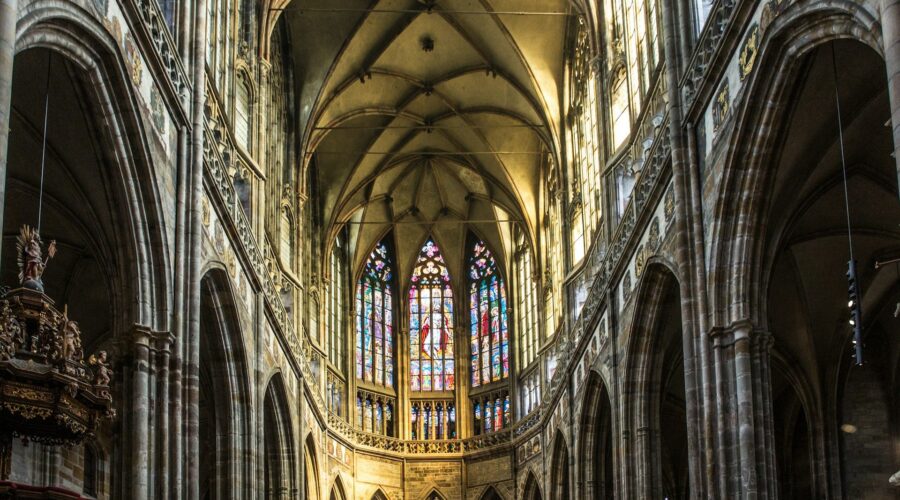
St. Paul the Apostle Catholic Church: A Beacon of Faith in Hingham
A Rich History
Established in 1882, St. Paul the Apostle Catholic Church has served as a spiritual home for generations of Catholics in the Hingham area. The original church building was constructed in 1883 and underwent renovations in 1927 and 1962.
A Vibrant Parish
Today, St. Paul’s is a thriving parish with over 2,000 families. The parish offers a wide range of spiritual, educational, and social programs, including daily Mass, weekly adoration, religious education classes, and youth groups.
A Welcoming Community
St. Paul’s is known for its warm and welcoming community. The parish staff and parishioners are committed to creating a welcoming and inclusive environment for all, regardless of background or beliefs.
Service to the Community
St. Paul’s is actively involved in serving the wider Hingham community. The parish provides financial assistance to families in need, supports local charities, and hosts a food pantry.
Worship Services
Mass Schedule
Day Time Monday 8:30 AM Tuesday 8:30 AM Wednesday 8:30 AM Thursday 8:30 AM Friday 8:30 AM Saturday 4:00 PM, 6:00 PM Sunday 7:30 AM, 9:00 AM, 11:00 AM, 5:00 PM Sacraments
- Baptism
- Reconciliation
- Communion
- Confirmation
- Marriage
- Anointing of the Sick
Education and Formation
Religious Education
St. Paul’s offers a comprehensive religious education program for children in grades 1-8. The program meets weekly and covers a variety of topics, including the Bible, the sacraments, and Catholic morality.
Adult Formation
The parish also offers a variety of adult formation programs, including Bible studies, retreats, and workshops. These programs provide opportunities for adults to deepen their faith and learn more about Catholic tradition.
Social Activities
Parish Council
The Parish Council is a group of parishioners who advise the pastor on matters of parish governance and operations. The council meets monthly and is open to all parishioners.
St. Vincent de Paul Society
The St. Vincent de Paul Society is a parish-based organization that provides financial and emotional support to families in need. The society also provides emergency assistance to those who have been affected by natural disasters or other crises.
Youth Groups
St. Paul’s offers a variety of youth groups for children and teenagers. These groups provide opportunities for young people to participate in spiritual, social, and service activities.
Contact Information
St. Paul the Apostle Catholic Church
1275 Hingham Street
Hingham, MA 02043Phone: (781) 749-9900
Website: www.stpaulhingham.org
Email: [email protected]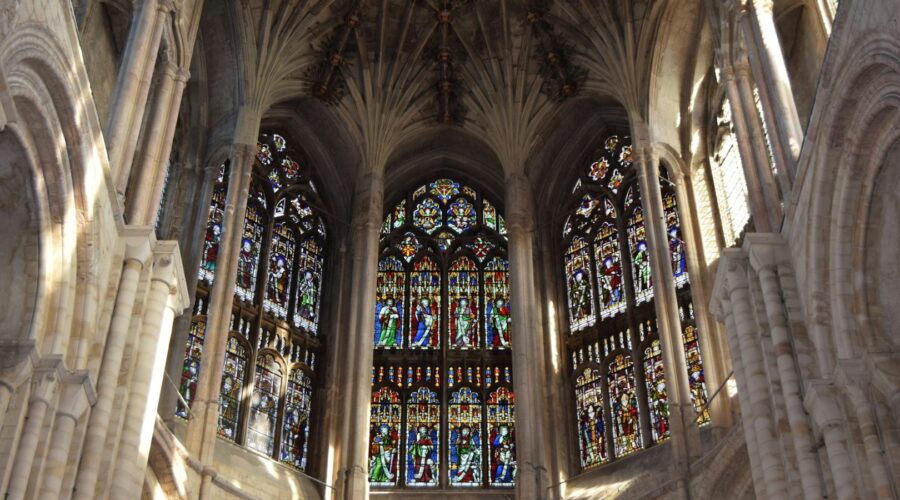
St. Aloysius Church: A Historical and Architectural Landmark
Introduction
St. Aloysius Church is a prominent Roman Catholic parish church located in the heart of College Park, Maryland. The church is dedicated to St. Aloysius Gonzaga, a 16th-century Italian Jesuit saint known for his piety and devotion. Founded in 1882, St. Aloysius Church has played a vital role in the religious, educational, and social life of the College Park community.
Architectural Significance
Neo-Gothic Revival Style
St. Aloysius Church is renowned for its stunning Neo-Gothic Revival architectural style, which was prevalent in the late 19th and early 20th centuries. The church’s exterior features a cruciform plan with a steeply pitched gable roof, pointed-arch windows, and elaborate buttresses.
Interior Ambiance
The interior of St. Aloysius Church is equally impressive, characterized by its soaring vaulted ceilings, intricate stained-glass windows, and ornate altarpieces. The painted decorations and murals depict biblical scenes and saints, creating a serene and uplifting atmosphere.
Historical Legacy
Foundation and Growth
St. Aloysius Church was founded in 1882 by a small group of Catholic settlers who sought to establish a place of worship in the growing community of College Park. The church’s first structure was a modest wooden chapel, which was later replaced by a larger brick church in 1893.
Educational Center
From its inception, St. Aloysius Church has been closely associated with education. The church established St. Patrick’s School in 1885, which provided primary and secondary education to the Catholic children of the parish. Over the years, the school expanded and evolved into the present-day St. Aloysius Gonzaga School.
Community Involvement
St. Aloysius Church has always been deeply involved in the social and charitable life of the College Park community. The church operates a food pantry, provides support for the homeless, and hosts various community events and outreach programs.
Worship and Sacraments
Mass Schedule
St. Aloysius Church offers daily and Sunday Mass, allowing parishioners to participate in the Holy Sacrifice of the Mass and receive the sacraments.
Day Weekday Mass Sunday Mass Monday-Friday 7:30 AM – Saturday 5:00 PM – Sunday – 8:00 AM, 10:00 AM, 12:00 PM, 5:00 PM Reconciliation and Anointing
Confession and Anointing of the Sick are available during designated times each week.
Eucharistic Adoration
The Blessed Sacrament is exposed for adoration in the Adoration Chapel every Tuesday from 7:00 PM to 8:00 PM.
Parish Life and Ministries
Choir and Music
St. Aloysius Church is known for its vibrant choir and music ministry. The choir performs at Masses and special events, enhancing the worship experience through their melodious harmonies.
Youth Group
The church has an active youth group for young people in grades 6-12. The youth group provides opportunities for faith formation, service projects, and social activities.
Seniors Group
St. Aloysius Church also has a seniors group for parishioners over the age of 55. The seniors group organizes social events, educational programs, and volunteer opportunities.
Visitor Information
Location and Contact
St. Aloysius Church is located at 9310 Annapolis Road, College Park, Maryland 20740.
Contact the church at (301) 474-3500 or visit their website at https://www.staloysiuschurch.org.
Tours and Pilgrimages
Guided tours of St. Aloysius Church are available upon request. Pilgrimages to the church are also welcomed, especially during the feast of St. Aloysius Gonzaga (June 21st).
Accessibility
St. Aloysius Church is committed to accessibility for all visitors. The church has wheelchair ramps and an elevator to ensure that everyone can fully participate in церковные службы and events.
Conclusion
St. Aloysius Church is a magnificent historical and architectural landmark that continues to serve as a vibrant center of Catholic faith and community in College Park. The church’s stunning Neo-Gothic Revival style, rich history, and diverse ministries make it a beloved destination for worshipers, visitors, and pilgrims alike.
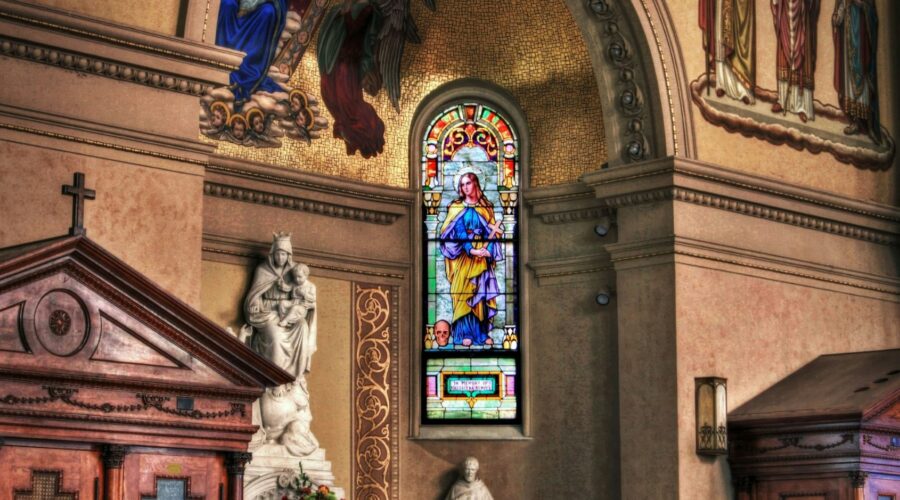
Explore a Historical Landmark: Second Presbyterian Church
A Profound History
Established in 1741, Second Presbyterian Church (SPC) stands as a testament to enduring faith and architectural grandeur in the heart of Philadelphia, Pennsylvania. This historic congregation has played a pivotal role in shaping the city’s religious landscape and preserving its cultural legacy.
Architectural Marvel
SPC boasts an exquisite architectural design that seamlessly blends Gothic Revival and Victorian elements. Its prominent facade features a massive bell tower, ornate stained glass windows, and intricate stone carvings. The interior is equally captivating, with a soaring vaulted ceiling, an impressive pipe organ, and a rich tapestry of religious artwork.
Gothic Revival Style
- Pointed arches
- Stained glass windows
- Tracery
Victorian Influence
- Intricate stonework
- High gables
- Polychromatic color schemes
Church Services and Community Outreach
SPC continues to be an active and vibrant congregation today. It offers a variety of worship services, including traditional, contemporary, and Spanish-language services. The church also hosts a wide range of community outreach programs, such as:
- Soup kitchens
- Food pantries
- Tutoring programs
- Support groups
Tours and Special Events
To appreciate the beauty and historical significance of SPC, visitors can take guided tours led by knowledgeable docents. The church also hosts special events throughout the year, including concerts, lectures, and exhibitions. These events provide an opportunity for the public to connect with the church’s heritage and mission.
Historical Significance
SPC has played a significant role in American history and culture:
- Revolutionary War: The church served as a hospital for wounded soldiers during the Battle of Germantown.
- Abolitionist movement: Prominent abolitionists such as Frederick Douglass and Harriet Beecher Stowe preached at SPC.
- Civil Rights movement: SPC supported the Civil Rights Act of 1964 and provided a safe haven for the Freedom Riders.
Notable Pastors
SPC has been led by several distinguished pastors throughout its history, including:
- Rev. John Witherspoon: A signer of the Declaration of Independence and President of the College of New Jersey (now Princeton University)
- Rev. Albert Barnes: A renowned abolitionist and author
- Rev. George Craig Stewart: A leader in the Social Gospel movement
Visitor Information
Second Presbyterian Church is located at 215 North 20th Street in Philadelphia, Pennsylvania. Guided tours are available Tuesday through Saturday, and worship services are held on Sundays.
Address: 215 North 20th Street, Philadelphia, PA Phone: (215) 563-1421 Website: https://www.secondpresbyterian.org/ Conclusion
Second Presbyterian Church stands as a towering symbol of faith, architectural beauty, and historical significance. Its enduring legacy continues to inspire generations of Philadelphians and visitors alike. Whether you are a history buff, an architecture enthusiast, or a seeker of spiritual guidance, SPC offers a rich and rewarding experience that will leave an unforgettable mark on your memory.
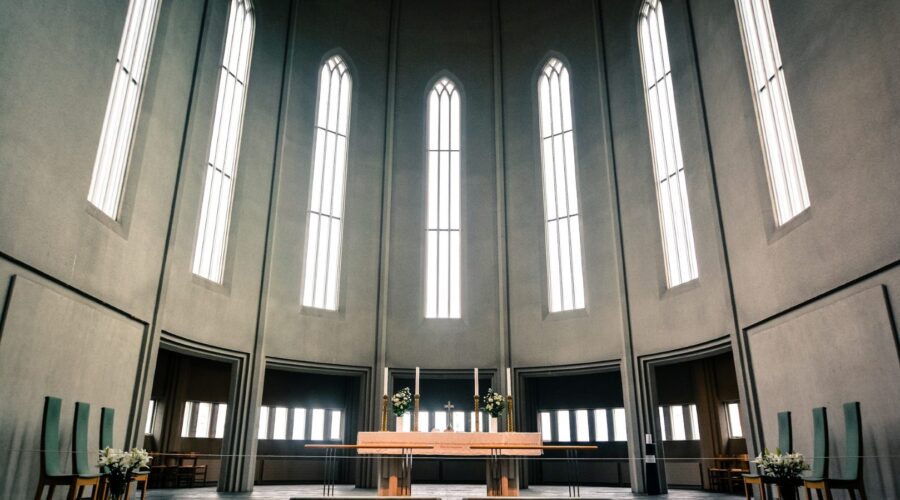
Embark on a Pilgrimage to Epiphany Catholic Church: A Haven of Faith and Community
Nestled in the heart of Dunwoody, Georgia, Epiphany Catholic Church stands as a beacon of faith and a cornerstone of the local community. Rooted in a rich history and guided by unwavering principles, Epiphany has become a spiritual oasis where individuals find solace, inspiration, and a sense of belonging.
A Historical Tapestry: Epiphany’s Genesis and Growth
Epiphany’s story traces its origins back to 1977, when a small group of Catholics gathered in a modest chapel to worship and share their faith. As the congregation grew, a need arose for a larger and more permanent home. In 1992, ground was broken for the construction of the current church building, which was solemnly consecrated in 1994.
Over the decades, Epiphany has undergone several expansions and renovations to accommodate its burgeoning membership. The church complex now encompasses a sanctuary, chapel, educational facilities, and a vibrant social hall. Each addition has been meticulously designed to enhance the spiritual experience and foster a welcoming environment for all.
Nurturing Faith: A Multifaceted Ministry
At Epiphany, faith is not simply a belief but a dynamic and transformative journey. The church’s extensive ministry programs cater to the spiritual needs of individuals and families of all ages:
Sacramental Life:
- Regular celebration of Mass, the central sacrament of Catholic life
- Penance and Reconciliation, offering spiritual guidance and forgiveness
- Baptism, welcoming infants and adults into the Catholic faith
- Holy Eucharist, the reception of Christ in Communion
- Confirmation, strengthening and confirming the gifts of the Holy Spirit
Education and Formation:
- Comprehensive religious education programs for children and adults
- Retreats and workshops, providing opportunities for spiritual growth
- Adult faith formation groups, fostering ongoing theological and moral reflection
Service and Outreach:
- Various ministries addressing the needs of the poor and marginalized
- Homebound visitation, bringing the sacraments and companionship to those unable to attend church
- Prison ministry, offering spiritual support and rehabilitation
A Vibrant Community: Beyond the Sanctuary
Epiphany is not merely a place of worship but a vibrant community where parishioners connect, grow, and support one another:
- Social Events: Regular gatherings, potlucks, and retreats foster fellowship and create a sense of belonging.
- Volunteer Opportunities: Members actively participate in various ministries and committees, contributing their time and talents.
- Youth Ministry: Comprehensive programs tailored to the spiritual and social needs of children, teens, and young adults.
- Senior Ministry: Dedicated programs and services for older adults, offering spiritual support and social engagement.
Practical Information for Visitors and Members
Whether you are a first-time visitor or a cherished member of the Epiphany family, here are some helpful details to enhance your experience:
Mass Schedule:
Day Time Monday – Friday 8:15 AM Saturday 5:00 PM Sunday 8:00 AM, 10:00 AM, and 12:00 PM Contact Information:
- Address: 2309 Peachtree Rd NE, Atlanta, GA 30345
- Phone: (404) 237-7774
- Official Website
- Email: [email protected]
Embracing Epiphany: A Journey of Faith and Community
Epiphany Catholic Church is more than a building; it is a vibrant community where individuals encounter the divine, forge meaningful connections, and serve those in need. Whether you are a lifelong Catholic or someone seeking spiritual guidance, Epiphany welcomes you with open arms.
Join us for Mass, explore our educational programs, or lend a helping hand through our volunteer opportunities. At Epiphany, you will discover a true home where faith, community, and service intertwine to create a transformative journey.
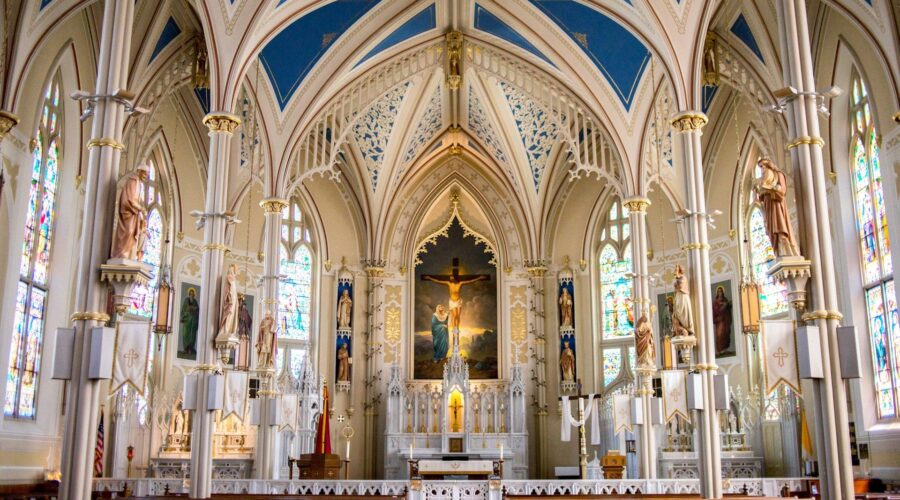
Discover the Rich History and Vibrant Community of St. Thomas More Parish
Introduction
Nestled in the heart of Sarasota, Florida, St. Thomas More Parish stands as a beacon of faith, community, and service. With over 60 years of history, the parish has played a vital role in shaping the spiritual and social landscape of the region. This comprehensive blog post will delve into the fascinating story of St. Thomas More Parish, exploring its rich past, dynamic present, and bright future.
Our Humble Beginnings (1959-1964)
The seeds of St. Thomas More Parish were sown in the late 1950s when a small group of Catholic families recognized the need for a new parish in Sarasota. They purchased a plot of land on Bee Ridge Road and began fundraising for the construction of a church. On April 26, 1959, the Most Reverend Coleman F. Carroll, Bishop of Miami, blessed the cornerstone of the new church.
The Parish Takes Root (1964-1980)
On December 20, 1964, St. Thomas More Church was dedicated and officially established as a parish. The early years were marked by a spirit of growth and enthusiasm as parishioners worked together to build a vibrant community. The parish school, St. Thomas More Catholic School, opened its doors in 1967 to serve the educational needs of the growing Catholic population.
- In 1971, the parish purchased additional land and began construction on a new parish center.
- In 1974, the Most Reverend Charles B. McLaughlin, Bishop of St. Petersburg, dedicated the new parish center.
- In 1980, the parish hall was expanded to accommodate the growing number of parishioners.
A Time of Transformation (1980-2000)
The 1980s and 1990s witnessed significant changes for St. Thomas More Parish. The parish celebrated its 25th anniversary in 1984, marking a quarter-century of service to the community. In 1997, the church was renovated and expanded to meet the needs of the growing congregation. St. Thomas More School also underwent renovations, adding new classrooms and facilities.
The Parish Today
Today, St. Thomas More Parish is a thriving community of over 3,000 families. The parish offers a wide range of ministries, including:
Website
- Liturgical ministries, such as Mass servers, altar servers, and liturgical music.
- Sacramental ministries, such as Baptism, Reconciliation, and Matrimony.
- Educational ministries, such as religious education programs and adult faith formation.
- Service ministries, such as outreach to the poor and homebound, and support for the sick and elderly.
The Future of St. Thomas More Parish
As St. Thomas More Parish looks towards the future, it remains committed to its mission of serving the spiritual and social needs of the community. The parish has plans for continued growth and expansion, including:
Project Timeline Renovation of the church sanctuary 2024 Expansion of the parish center 2026 Construction of a new athletic field 2028 Conclusion
St. Thomas More Parish is a vibrant and growing community of faith, service, and love. With a rich history and a bright future, the parish is poised to continue playing a vital role in the spiritual and social life of Sarasota for many years to come. We invite you to join our community and experience the joy and fulfillment of being a part of St. Thomas More Parish.
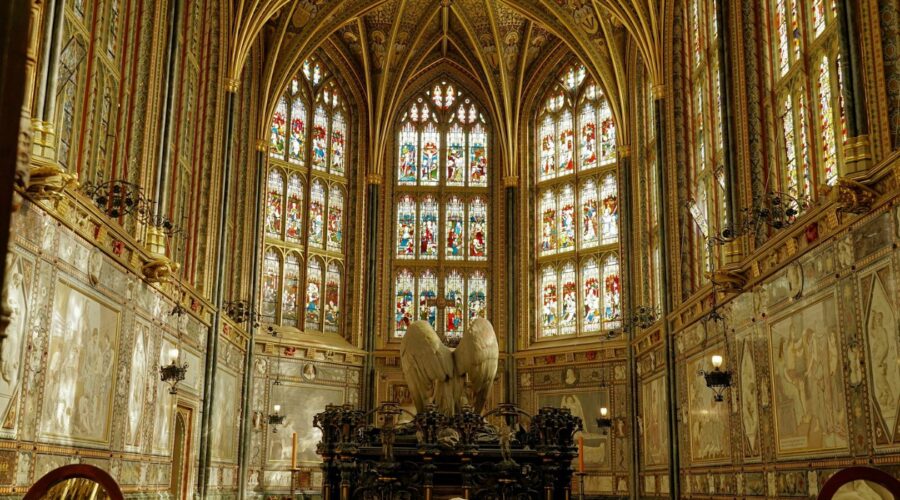
Discover the Enchanting World of St. Philips: A Comprehensive Guide
Introduction
St. Philips, a vibrant neighborhood in Bristol, England, is a hidden gem with captivating history, stunning architecture, and a lively dining scene. Whether you’re a local resident, a tourist, or an aspiring homeowner, this comprehensive guide will provide you with an in-depth exploration of all that St. Philips has to offer.
Historical Significance
Arnos Vale Cemetery
Nestled within St. Philips, Arnos Vale Cemetery is a poignant reminder of the area’s rich past. Established in 1839, this Victorian cemetery boasts intricate memorials, grand mausoleums, and a tranquil atmosphere that invites contemplation.
St. Philip’s Church
St. Philip’s Church, built in 1174, is the oldest standing church in Bristol. Its Gothic architecture, fascinating medieval stained-glass windows, and historic churchyard evoke centuries of faith and community.
Architectural Marvels
Georgian and Victorian Houses
St. Philips is renowned for its charming Georgian and Victorian terraced houses. These elegant properties feature intricate details, colorful facades, and spacious interiors that exude a sense of bygone eras.
St. Agnes Park
This picturesque park is a green oasis amidst the urban landscape. Surrounded by imposing Victorian villas, St. Agnes Park offers serene gardens, a playground, and a bandstand for summer concerts.
Vibrant Dining Scene
St. Philips is a culinary haven with a diverse range of cuisines and dining experiences.
Independent Restaurants
From authentic Italian trattorias to cozy gastropubs, St. Philips is home to a plethora of independent restaurants offering fresh, locally sourced dishes.
Greggs Factory Outlet
For those seeking a sweet treat, the Greggs Factory Outlet is a paradise of pastries, cakes, and freshly baked goods at irresistible prices.
Community Spirit
St. Philips is a close-knit community with a strong sense of belonging. Residents actively participate in local events, festivals, and volunteer initiatives that foster a welcoming atmosphere.
St. Philip’s Community Centre
The St. Philip’s Community Centre serves as a hub for local activities, offering classes, workshops, and social events that cater to all ages.
Practical Information
Getting There
St. Philips is easily accessible by bus or taxi, with regular services connecting to the city center and surrounding areas.
Accommodation
For visitors seeking overnight accommodation, there are several comfortable guesthouses and bed and breakfasts within St. Philips.
Cost of Living
Compared to other areas of Bristol, St. Philips offers relatively affordable housing and living costs, making it an attractive option for families and young professionals.
Conclusion
St. Philips is a fascinating and dynamic neighborhood that seamlessly blends historic charm with modern amenities. Its captivating architecture, vibrant dining scene, and strong community spirit make it a truly special place to live, work, or visit. Whether you’re a history buff, an architectural enthusiast, or simply seeking a welcoming and fulfilling community, St. Philips is sure to captivate your heart.
Useful Links
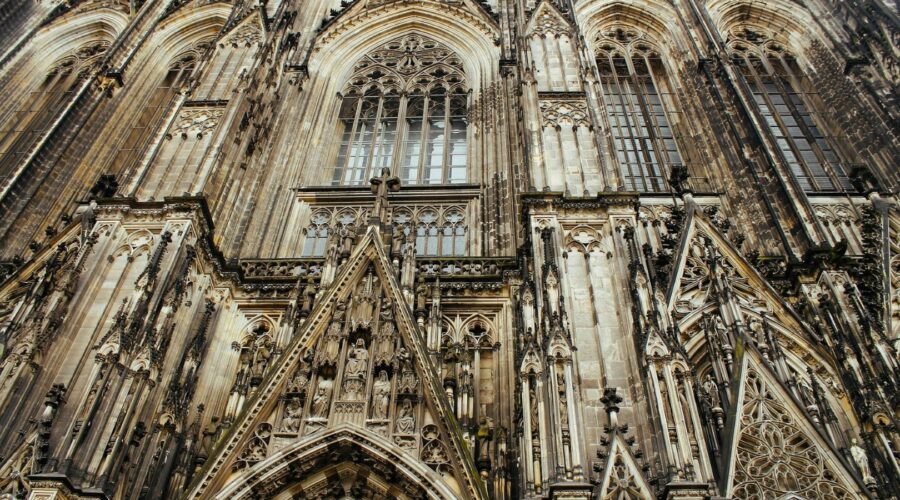
Gloria Dei Lutheran Church: A Historical and Spiritual Landmark in Philadelphia
An Introduction to Gloria Dei Lutheran Church
Gloria Dei Lutheran Church is a historic Lutheran church located in the Old City neighborhood of Philadelphia, Pennsylvania. It is the oldest surviving Lutheran church in the United States, having been founded in 1695 by a group of German immigrants led by Pastor Johann Heinrich Goettsch. Over the centuries, Gloria Dei has played a significant role in the religious, social, and cultural life of Philadelphia and beyond.
The Architecture and History of Gloria Dei
Architectural Style
Gloria Dei Lutheran Church is a fine example of Georgian-style architecture, characterized by its symmetrical facade, red brick exterior, and white trim. The church building was designed by Nicholas Garrison and completed in 1700. It features a bell tower with a distinctive copper steeple, which was added in 1743.
Historical Significance
Gloria Dei has witnessed many important events throughout its history. It was the site of the first Lutheran ordinations in North America and served as a meeting place for the Continental Congress during the American Revolution. The church’s walls bear witness to the prayers, joys, and sorrows of generations of Philadelphians.
The Religious Life of Gloria Dei
Worship Services
Gloria Dei offers a variety of worship services throughout the week, including Sunday morning services, Wednesday evening services, and special services during the liturgical seasons. The church’s worship style is a blend of traditional and contemporary elements, with a focus on the liturgy, music, and preaching.
Community Outreach
Gloria Dei is actively involved in outreach and service to the surrounding community. The church supports a number of social service programs, including a food pantry, homeless shelter, and youth programs. It also offers a variety of educational and cultural events for people of all ages.
The People of Gloria Dei
Gloria Dei is a diverse and welcoming congregation with members from all walks of life. The church’s motto, “A Place of Welcome for All,” reflects its commitment to creating an inclusive and supportive community where all are valued.
Visiting Gloria Dei Lutheran Church
Gloria Dei Lutheran Church is located at 225 S 4th St, Philadelphia, PA 19106. Visitors are welcome to attend worship services or schedule a tour during regular business hours.
Accessibility
Gloria Dei is wheelchair accessible and offers assistive listening devices for the hearing impaired.
Parking
Limited parking is available on the street and in nearby garages. Visitors may also take public transportation to the Market East Station, which is a few blocks away from the church.
Conclusion
Gloria Dei Lutheran Church is a historic and vibrant congregation that has played a vital role in the life of Philadelphia for over three centuries. Its beautiful architecture, rich history, and active community outreach make it a must-visit destination for visitors and locals alike.
Additional Resources
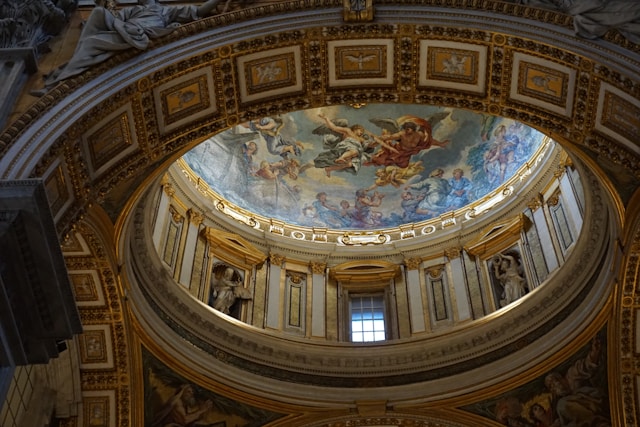
Antioch Missionary Baptist Church: A Historical and Spiritual Haven
Introduction
Nestled in the heart of historical Atlanta, Georgia, Antioch Missionary Baptist Church stands as a testament to the enduring legacy of African American faith and community. A beacon of spiritual guidance, social justice, and cultural preservation, Antioch has played a pivotal role in shaping the lives of countless individuals and the city’s tapestry since its inception in 1837.
Historical Roots
The origins of Antioch Missionary Baptist Church can be traced back to a small group of enslaved African Americans who gathered in secret to worship and seek solace. In 1837, they acquired a plot of land on Auburn Avenue and established their first church building, a humble log cabin. The church’s name, Antioch, was inspired by the biblical city in Syria where the early Christian community flourished.
Antebellum and Civil War Era
- Antioch played a vital role in the abolitionist movement and the Underground Railroad, providing safe haven and support to escaped slaves.
- The church’s pastor, Rev. Thomas B. Gould, was a prominent advocate for the end of slavery and civil rights.
Reconstruction and the Jim Crow Era
- After the Civil War, Antioch became a center for African American education and political activism.
- The church established a school for freed slaves and was a stronghold for the Freedmen’s Bureau.
- Despite the challenges of Jim Crow segregation, Antioch remained a vibrant and influential community nexus.
The Martin Luther King Jr. Legacy
Antioch Missionary Baptist Church holds a special place in the history of the civil rights movement. It was the spiritual home of the iconic leader, Dr. Martin Luther King Jr., from 1960 until his assassination in 1968.
Dr. King’s Ministry at Antioch
- Dr. King delivered numerous sermons from the pulpit at Antioch, inspiring a generation with his message of nonviolent resistance and social change.
- The church served as a meeting ground for civil rights leaders and activists, including Rosa Parks, Ralph Abernathy, and Andrew Young.
Antioch’s Role in the Movement
- The church was the starting point for the Selma to Montgomery marches in 1965.
- Antioch hosted the Southern Christian Leadership Conference (SCLC), which Dr. King co-founded.
Modern-Day Antioch
Today, Antioch Missionary Baptist Church continues to be a beacon of hope and progress. Led by its current pastor, Rev. Dr. Damion Thompson, the church remains a thriving spiritual community while also addressing contemporary social issues.
Social Outreach and Community Involvement
- Antioch operates a food pantry, homeless shelter, and after-school program.
- The church partners with local organizations to provide job training, affordable housing, and healthcare.
- Antioch has established a community garden to promote healthy living and food security.
Historical Preservation and Legacy
- The church has been designated a National Historic Landmark in recognition of its historical significance.
- Antioch maintains an extensive archive of its history and the civil rights era.
- Guided tours are available to the public, providing visitors with a glimpse into the church’s remarkable journey.
Conclusion
Antioch Missionary Baptist Church stands as an enduring symbol of the resilience, faith, and community spirit of the African American people. From its humble beginnings as a clandestine gathering to its role in the civil rights movement and its ongoing social outreach, Antioch has made an immeasurable contribution to Atlanta and beyond.
As a thriving spiritual community and a living history museum, Antioch Missionary Baptist Church continues to inspire and empower generations of believers and activists. It is a testament to the transformative power of faith, the importance of preserving our past, and the boundless possibilities for a just and equitable future.
Key Historical Dates Year Event 1837 Antioch Missionary Baptist Church is established. 1848 The church builds its first permanent sanctuary. 1906 Rev. Thomas B. Gould becomes pastor. 1960 Dr. Martin Luther King Jr. becomes pastor. 1965 Antioch is the starting point for the Selma to Montgomery marches. 1968 Dr. King is assassinated. 1974 Antioch is designated a National Historic Landmark. 2020 Rev. Dr. Damion Thompson becomes pastor.